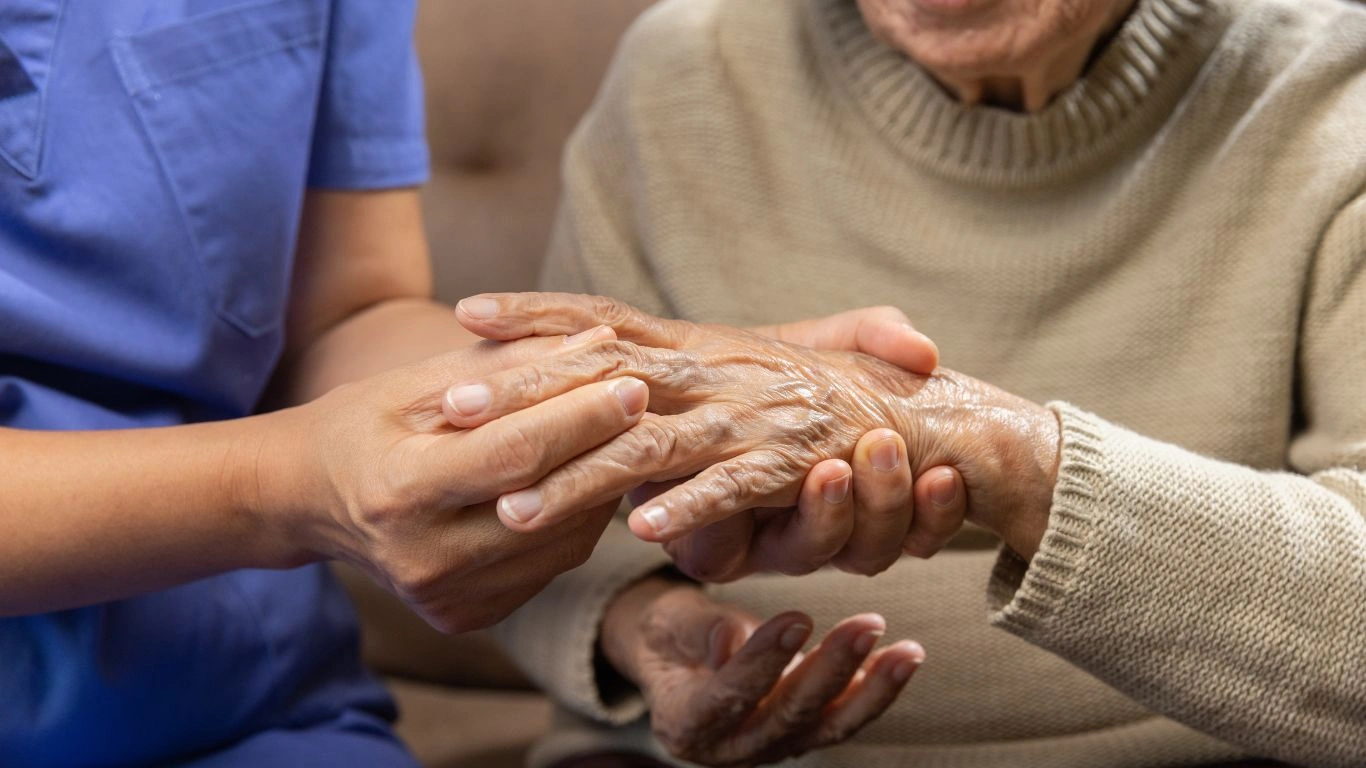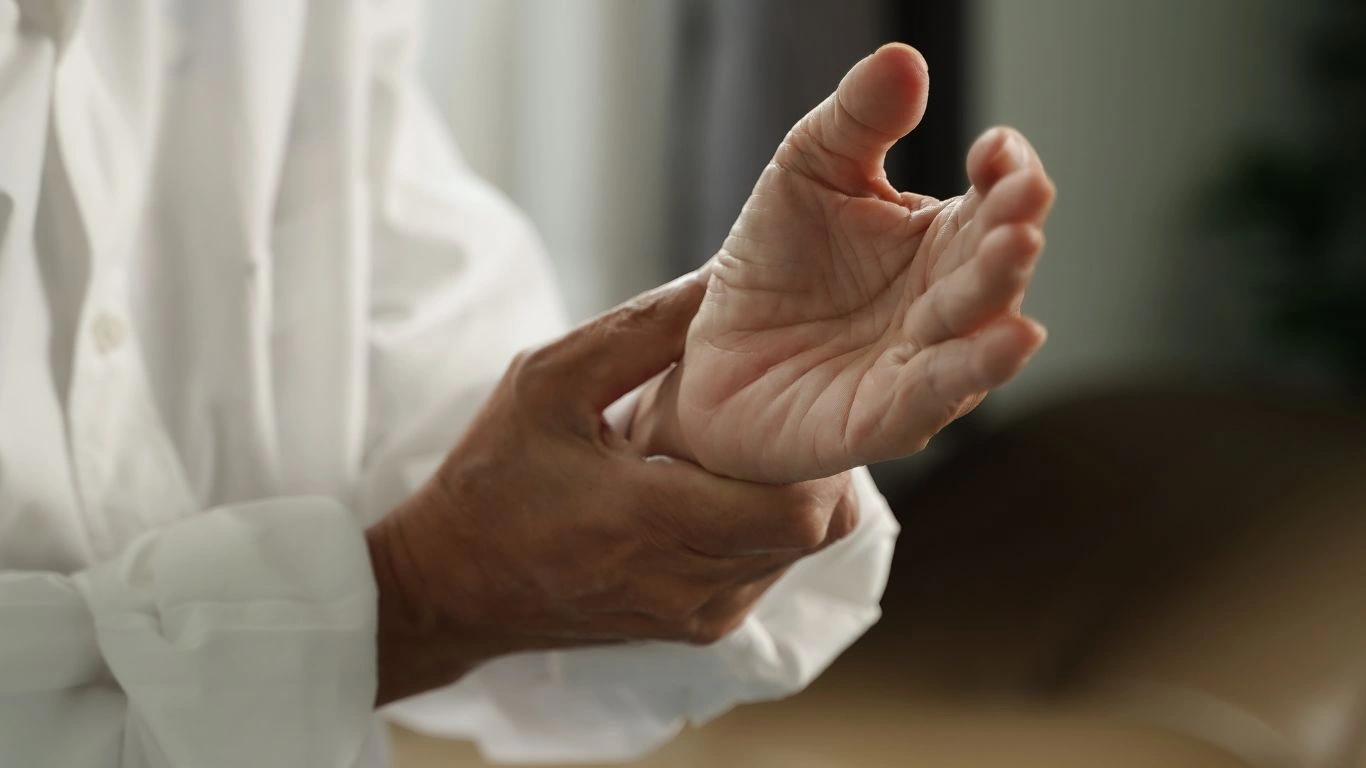Unlock Powerful Relief: Understanding RA and Chronic Fatigue Link
If you’ve ever cared for someone with rheumatoid arthritis (RA) or lived with it yourself, you know how exhausting it can be. But what often gets overlooked in the day-to-day struggle is the deep, relentless fatigue that accompanies RA. This isn’t your average tiredness — it’s a chronic, bone-weary kind of fatigue that affects nearly every part of life. In fact, the link between RA and chronic fatigue is so significant that understanding it can change how we manage the disease and improve quality of life. As a Rheumatology nurse practitioner, I’ve seen firsthand how this fatigue isn’t just “in the patient’s head” but a real, physiological challenge that deserves attention.
The Complex Relationship Between RA and Chronic Fatigue

Fatigue in RA patients isn’t just about feeling sleepy or needing a nap. It’s multifaceted and often described as overwhelming, persistent, and resistant to rest. From my experience, patients often say it feels like they’re running on empty, even after a full night’s sleep. But why does RA cause this kind of fatigue? The answer lies in the underlying inflammation and immune system activity that drive the disease.
Inflammation: The Hidden Fatigue Trigger
RA is an autoimmune condition where the body’s immune system mistakenly attacks the joints. This attack causes inflammation, which doesn’t stay localized but sends a flood of inflammatory chemicals into the bloodstream. These cytokines, such as tumor necrosis factor (TNF) and interleukin-6 (IL-6), don’t just cause joint pain—they also impact the brain’s chemistry and energy regulation.
I often explain to my patients that this inflammation can disrupt normal body functions in a way that mimics an ongoing infection — making the body feel constantly tired and worn out. It’s like the immune system is stuck in “high alert” mode, draining energy reserves faster than usual.
Other Factors Contributing to Fatigue in RA
While inflammation is a major piece of the puzzle, it’s not the only one. In clinical practice, I’ve observed several other contributors that play a role in this chronic fatigue:
- Pain: Chronic joint pain is exhausting. It disrupts sleep and limits physical activity, both of which make fatigue worse.
- Sleep disturbances: Many people with RA struggle with poor sleep quality, often due to pain or restless legs syndrome.
- Medications: Some RA treatments, including steroids or certain disease-modifying drugs, can cause drowsiness or energy dips.
- Depression and anxiety: Living with a chronic illness can impact mental health, which in turn amplifies feelings of fatigue.
- Physical deconditioning: Reduced activity due to pain or stiffness can lead to muscle weakness and reduced stamina.
All these factors intertwine, making fatigue a complicated symptom to manage. It’s never just one thing—it’s a combination that varies from person to person.
Why Recognizing the RA and Chronic Fatigue Link Matters

Many people with RA feel misunderstood when they talk about their fatigue. Friends, family, and even some healthcare providers might think it’s just a matter of needing more rest or that it’s “all in their head.” But the truth is, acknowledging this link helps open doors to better treatment strategies and support systems.
Fatigue as a Key Indicator of Disease Activity
From my clinical perspective, when a patient reports increased fatigue, it often signals a flare or active disease. This symptom can be an early warning sign, even before joint swelling or pain worsen noticeably. Addressing fatigue proactively can sometimes prevent bigger complications down the line.
Improving Daily Life Through Fatigue Management
Understanding the RA-fatigue connection encourages a more holistic approach to treatment. Besides medication adjustments, it pushes us to consider lifestyle changes, physical therapy, mental health support, and energy conservation techniques. Patients who learn to manage their fatigue report better mood, improved function, and a greater sense of control over their condition.
Practical Ways to Manage Fatigue Linked to RA

Fatigue from RA is tough to shake off, but there are some real-world strategies that can help ease the burden. Over the years, working closely with patients, I’ve learned that managing fatigue is rarely about a quick fix. Instead, it’s a mix of smart self-care, medical support, and lifestyle tweaks. What works for one person might not work for another, so it’s about finding what fits your unique situation.
Energy Conservation: Working Smarter, Not Harder
One of the first things I tell my patients is to be kind to themselves. Trying to push through fatigue by “powering through” often backfires. Instead, energy conservation techniques are key. This means prioritizing tasks, breaking activities into manageable chunks, and taking frequent breaks. For example, rather than cleaning the entire house in one go, spread it out over several days or focus on high-priority areas.
I also recommend using assistive devices where appropriate — things like cushioned mats for standing, ergonomic kitchen tools, or even mobility aids can make a big difference in saving precious energy.
Exercise: The Paradoxical Fatigue Fighter
It might sound counterintuitive to move when you’re feeling exhausted, but gentle, regular exercise is one of the best ways to fight chronic fatigue linked to RA. Over the years, I’ve encouraged many patients to try low-impact activities like swimming, walking, or yoga. These exercises improve muscle strength, joint flexibility, and boost mood—all factors that can reduce fatigue.
Starting slow and listening to your body is crucial. Even a 10-minute walk around the block can help. The goal is consistency, not intensity. In fact, some studies have shown that patients who engage in regular exercise report less fatigue and improved overall well-being.
Nutrition and Hydration: Fueling Your Body Right
Another often overlooked piece of the fatigue puzzle is diet. Inflammation and energy levels are closely linked to what we eat. In my clinical experience, patients who focus on an anti-inflammatory diet—rich in fruits, vegetables, lean proteins, and healthy fats—often report feeling better. Omega-3 fatty acids, found in fish and flaxseeds, have been shown to help reduce inflammation and may indirectly ease fatigue.
Staying well-hydrated is just as important. Dehydration can make fatigue worse, so I always remind patients to drink water regularly throughout the day, especially when on medications that may have diuretic effects.
The Role of Mental Health in RA-Related Fatigue

One of the biggest, yet sometimes under-addressed, contributors to fatigue in RA is mental health. Dealing with a chronic illness can wear down your emotional reserves. Anxiety, depression, and stress don’t just impact your mood—they directly influence fatigue levels, making the body feel even more drained.
Recognizing Emotional Fatigue
Emotional fatigue can feel just as overwhelming as physical tiredness. From my perspective, patients who recognize this connection are better positioned to seek help and support. Talking openly about feelings, whether with a trusted healthcare provider, counselor, or support group, is a vital step.
Mindfulness and Stress Reduction Techniques
Mindfulness, meditation, and other stress reduction techniques have helped many of my patients. These tools don’t eliminate RA fatigue but can help reduce the emotional load that intensifies it. Even just 5–10 minutes a day of deep breathing or guided meditation can bring noticeable relief.
I often recommend apps or local classes that teach these methods, as the support and structure help patients stick with the practice.
Medical Interventions to Address Fatigue in RA

Of course, medical treatment remains central to managing the RA and chronic fatigue link. When inflammation is under control, fatigue usually improves. That’s why keeping up with prescribed medications, whether it’s DMARDs (disease-modifying antirheumatic drugs), biologics, or steroids, is essential.
Adjusting Treatments Based on Fatigue Symptoms
If fatigue is overwhelming despite treatment, it may be a sign that disease activity is still high or that medication side effects are playing a role. In my practice, I always encourage patients to communicate openly about their fatigue. Sometimes adjusting medication doses or switching drugs can lead to better energy levels.
Addressing Sleep Issues and Other Medical Causes
Sleep problems are common in RA and can worsen fatigue dramatically. Identifying and treating sleep disorders, such as sleep apnea or restless leg syndrome, can make a world of difference. Additionally, checking for other medical conditions like anemia or thyroid problems—which can mimic or worsen fatigue—is an important step.
Collaboration between rheumatologists, primary care providers, and sometimes sleep specialists or mental health professionals ensures a comprehensive approach to tackling fatigue.
Living Well with RA and Chronic Fatigue: My Personal Insights

After years of working as a Rheumatology nurse practitioner, one thing has become crystal clear to me: living with RA-related fatigue isn’t just about managing symptoms — it’s about redefining what “normal” feels like. Fatigue can sneak up on you, make you feel powerless, and even isolate you from the people and activities you love. But it’s also something we can learn to manage with patience, knowledge, and the right support.
I remember a patient who once told me, “The fatigue feels like invisible chains holding me down.” That stuck with me. Because fatigue in RA isn’t just physical—it’s emotional and mental, too. Helping patients untangle those chains takes more than just prescriptions. It requires compassion, education, and a plan tailored to each person’s life.
Building a Support System That Understands
One of the best pieces of advice I give is to build a solid support network. This might include family, friends, healthcare providers, and even fellow RA warriors. Connecting with others who “get it” can make a huge difference in coping with fatigue. When my patients join support groups or online communities, they often say how validating it feels to hear others describe the same struggles with energy and pain.
I encourage open conversations with loved ones about what fatigue looks like for you. Sometimes people assume that if you look fine, you’re fine — but RA fatigue isn’t always visible. Helping those around you understand this invisible symptom can improve relationships and reduce frustration on both sides.
Personalized Pacing: Finding Your Rhythm
Another lesson I share is the importance of pacing yourself. Fatigue doesn’t play by rules, and some days will be better than others. Learning to listen to your body, recognizing early signs of exhaustion, and adjusting your plans accordingly is key.
I often suggest my patients keep a fatigue diary, noting what activities drain them most and when energy peaks during the day. This simple tool can help you identify patterns and carve out time for rest when you need it most. Remember, pacing isn’t about giving up; it’s about preserving energy so you can enjoy the things that matter.
Emerging Research and Future Directions on RA and Fatigue

The connection between RA and chronic fatigue continues to be an active area of research. Scientists are exploring new treatments aimed specifically at reducing fatigue and improving patients’ quality of life. Some promising developments include:
- Targeted biologic therapies: These drugs focus on specific inflammatory pathways and may help reduce fatigue by better controlling disease activity.
- Fatigue-specific clinical trials: Researchers are designing studies to test interventions like cognitive behavioral therapy (CBT), exercise programs, and nutritional supplements tailored to combat fatigue.
- Biomarkers for fatigue: Identifying measurable biological markers could help doctors predict and monitor fatigue levels, leading to more personalized treatment.
As someone who stays current with the latest in rheumatology, I’m optimistic that these advances will eventually translate into better fatigue management strategies for patients everywhere.
How You Can Stay Informed and Advocate for Yourself
Keeping up with new information can feel overwhelming, but it’s empowering to stay informed. Reliable sources like professional organizations and patient advocacy groups provide valuable updates and resources. I always recommend visiting trusted sites such as
The American College of Rheumatology or
Arthritis Foundation for up-to-date information.
Don’t hesitate to bring questions or concerns about fatigue to your healthcare team. You’re your own best advocate, and a good provider will listen and work with you to adjust your care plan.
References
Disclaimer
This article is intended for informational purposes only and does not replace professional medical advice. Always consult your healthcare provider before making changes to your treatment or management plan. Individual experiences with rheumatoid arthritis and fatigue may vary, and management should be personalized to your unique needs.

Tarra Nugroho is a dedicated Nurse Practitioner with a strong foundation in family and preventive care. She brings both compassion and clinical expertise to her practice, focusing on patient-centered care and health education. As a contributor to Healthusias.com, Tarra translates medical knowledge into clear, empowering articles on topics like women’s health, chronic disease management, and lifestyle medicine. Her mission is simple: help people feel seen, heard, and informed—both in the clinic and through the content she creates. When she’s not caring for patients, Tarra enjoys weekend hikes, plant-based cooking, and curling up with a good health podcast.






